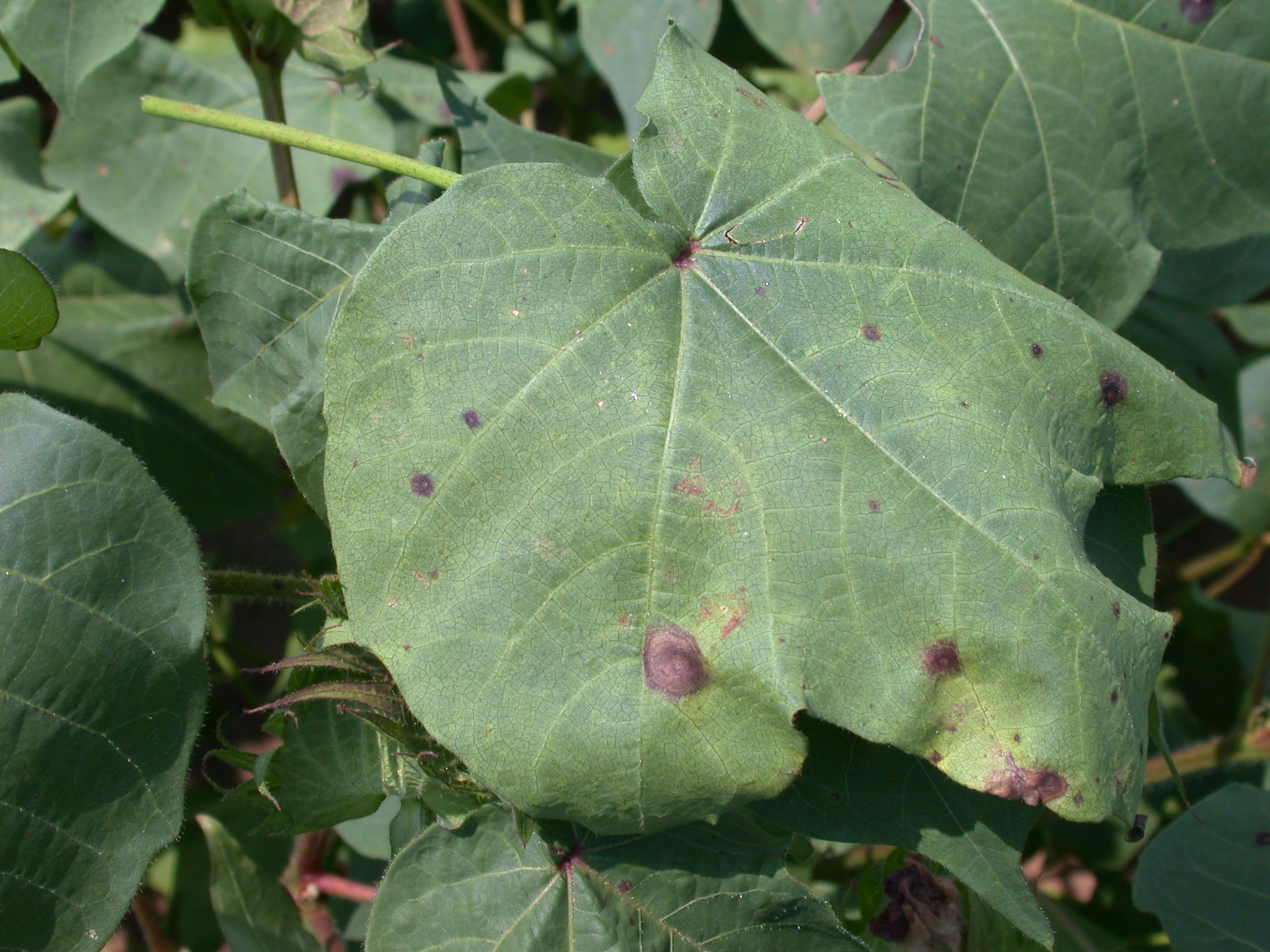
Target spot is caused by the fungal pathogen Corynespora cassiicola. Leaf spots usually are up to ¼ to ½ inch in diameter and have a distinct “target spot” pattern with alternating light and dark brown bands of dead tissue.
Target spot disease was confirmed from a sample taken in Santa Rosa County on June 27 and is becoming increasingly widespread on cotton throughout the area. This is likely due to all the rain we’ve been getting and the resulting rank growth in many fields. Studies the past two years in Alabama and Georgia have shown yield increases of more than 200 lb lint/A with one or two fungicide applications. Recommended cotton fungicides are Headline, Twinline, and Quadris. The current recommended application timings for target spot is either a single application at 3rd week of bloom, or an application at the 1st and 3rd weeks of bloom. A single application at 3rd week of bloom last year was often as good as an application at the 1st and 3rd; however, the 2-application program gave more consistent results, but cost more.
Dr. Bob Kemerait, University of Georgia Extension Specialist, says
“First you should understand that there is still MUCH to learn about target spot. Second, simply finding target spot in a field does not mean that a fungicide application will bring the grower more money. However, our current weather conditions do increase the risk to target spot in cotton across the Coastal Plain. To determine if a fungicide application is appropriate, first consider the DRAFT UGA Cotton Risk Index for target spot. Second, as you approach bloom and beyond, take the time to scout the field for target spot. It is important to catch the disease very early. High risk fields, rainfall, rank growth and target spot can all lead to significant reduction in yield.”
Target spot is caused by the fungal pathogen Corynespora cassiicola and is most severe during periods of extended leaf wetness. Leaf spots usually are up to ¼ to ½ inches in diameter and have a distinct “target spot” pattern with alternating light and dark brown bands of dead tissue. It generally starts at the bottom of the cotton plant and works its way up the stalk. Significant defoliation can occur very quickly after initial detection of the disease.
Stemphylium, Alternaria, and Cercospora fungi can also cause leaf spotting in cotton. Leaf spotting attributed to these fungi is associated with a potash deficiency and has not been shown to respond to fungicide treatments. Individual leaf spot lesions of Stemphylium, Alternaria, and Cercospora are much smaller and circular in shape than target spot lesions.
For more information and help in positively identifying target spot, refer to the following references or contact your County Extension Agent:
Assessing Risk to Target Spot in Georgia (Draft)
Corynespora Leaf Spot in Alabama Cotton
Comparison of Registered and Candidate Fungicides for Control of Target Spot in Cotton
Leaf Spot Management in Alabama Cotton
- 2017 UF/IFAS Cotton Variety Trial Results - March 23, 2018
- Burlin and Levi Findley Families Honored as 2017 Santa Rosa County Farm Families of the Year - January 12, 2018
- Snails have Invaded the Western Panhandle - July 14, 2017
